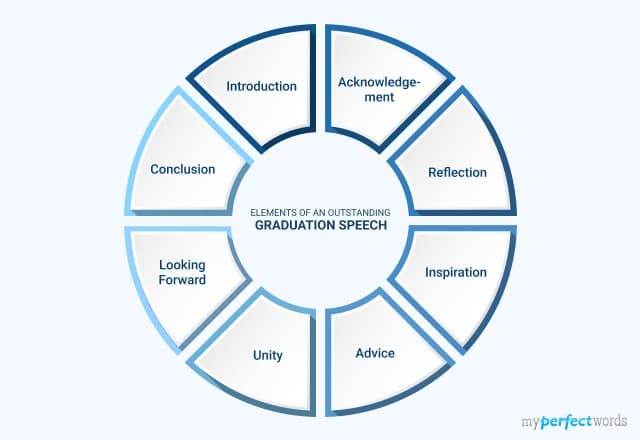

Introduction speeches are all around us. Whenever we meet a new group of people in formal settings, we have to introduce ourselves. That’s what an introduction speech is all about.
When you're facing a formal audience, your ability to deliver a compelling introductory speech can make a lot of difference. With the correct approach, you can build credibility and connections.
In this blog, we'll take you through the steps to craft an impactful introduction speech. You’ll also get examples and valuable tips to ensure you leave a lasting impression.
So, let's dive in!
On This Page![]()
- 1. What is an Introduction Speech?
- 2. How to Write an Introduction Speech?
- 3. Introduction Speech Outline
- 4. Introduction Speech Example
- 5. Introduction Speech Ideas
- 6. 7 Tips for Delivering the Best Introduction Speech
What is an Introduction Speech?
An introduction speech, or introductory address, is a brief presentation at the beginning of an event or public speaking engagement. Its primary purpose is to establish a connection with the audience and to introduce yourself or the main speaker.
This type of speech is commonly used in a variety of situations, including:
- Public Speaking: When you step onto a stage to address a large crowd, you start with an introduction to establish your presence and engage the audience.
- Networking Events: When meeting new people in professional or social settings, an effective introduction speech can help you make a memorable first impression.
- Formal Gatherings: From weddings to conferences, introductions set the tone for the event and create a warm and welcoming atmosphere.
In other words, an introduction speech is simply a way to introduce yourself to a crowd of people.
How to Write an Introduction Speech?
Before you can just go and deliver your speech, you need to prepare for it. Writing a speech helps you organize your ideas and prepare your speech effectively.
Here is how to introduce yourself in a speech.
- Know Your Audience
Understanding your audience is crucial. Consider their interests, backgrounds, and expectations to tailor your introduction accordingly.
For instance, the audience members could be your colleagues, new classmates, or various guests depending on the occasion. Understanding your audience will help you decide what they are expecting from you as a speaker.
- Opening the Speech with a Hook
The best speech introduction starts with a hook or opening line that grabs your audience's attention. This could be a surprising fact, a relevant quote, or a thought-provoking question about yourself or the occasion.
- Introduce Yourself
Introduce yourself to the audience. State your name, occupation, or other details relevant to the occasion. You should have mentioned the reason for your speech clearly. It will build your credibility and give the readers reasons to stay with you and read your speech.
- Keep It Concise
So how long is an introduction speech?
Introduction speeches should be brief and to the point. Aim for around 1-2 minutes in most cases. Avoid overloading the introduction with excessive details.
- Highlight Key Points
Mention the most important information that establishes the speaker's credibility or your own qualifications. Write down any relevant achievements, expertise, or credentials to include in your speech. Encourage the audience to connect with you using relatable anecdotes or common interests.
- Rehearse and Edit
Practice your introduction speech to ensure it flows smoothly and stays within the time frame. Edit out any unnecessary information, ensuring it's concise and impactful.
- Tailor for the Occasion
Adjust the tone and content of your introduction speech to match the formality and purpose of the event. What works for a business conference may not be suitable for a casual gathering.
Introduction Speech Outline
To assist you in creating a structured and effective introduction speech, here's a simple speech format that you can follow:
Introduction Speech Format I. Opening Hook:
II. Greeting (if applicable):
III. Introduce Yourself (if self-introduction) or Introduce the Main Speaker
V. Provide Context (if necessary):
VI. Highlight Key Points:
VII. Conclusion:
VIII. Transition to the Main Event or the Next Speaker:
IX. Thank You (if applicable):
X. Closing Remark (optional):
|
Here is an example outline for a self-introduction speech.
Introduction Speech Example
So if you are wondering what to say in an introduction speech we have you covered! We have compiled introduction speech examples to help you understand how to put your ideas into practice for different scenarios.
Moreover, here is a video example of a self-introduction speech. Watch it to understand how you should deliver your speech:
Want to read examples for other kinds of speeches? Find the best speeches at our blog about speech examples!
What Are Some Famous Introduction Speeches?
Here are the best introduction speeches for students to get inspired:
- Malala Yousafzai's Nobel Peace Prize Acceptance Speech (2014): Malala's speech upon receiving the Nobel Peace Prize introduced her advocacy for girls' education and youth empowerment globally.
- Elon Musk's Presentation on SpaceX Interplanetary Transport System (2016): Elon Musk introduced SpaceX's ambitious plans for interplanetary travel, outlining a vision for the future of space exploration.
- Michelle Obama's Democratic National Convention Speech (2008): Michelle Obama's speech introduced her as a potential First Lady, sharing personal stories and values that resonated with the audience.
- J.K. Rowling's Harvard Commencement Speech (2008): Rowling's speech introduced themes of failure, imagination, and resilience, drawing from her personal journey as an author and philanthropist.
Introduction Speech Ideas
So now that you’ve understood what an introduction speech is, you may want to write one of your own. So what should you talk about?
The following are some sample introduction speech topics and ideas that can provide an engaging start to a presentation, meeting, or social gathering.
- Personal Story: Share a brief personal story or experience that has shaped you.
- Professional Background: Highlight your career achievements and expertise.
- Hobby or Passion: Discuss a hobby or passion you're enthusiastic about.
- Volunteer Work: Talk about your involvement in volunteer work or community service.
- Travel Adventures: Share anecdotes from your travel adventures.
- Books or Literature: Provide an introduction related to a favorite book, author, or literary work.
- Achievements and Milestones: Highlight significant achievements and milestones in your life or career.
- Cultural Heritage: Explore your cultural heritage and its influence on your identity.
- Social or Environmental Cause: Discuss your dedication to a particular social or environmental cause.
- Future Aspirations: Share your future goals and aspirations.
You can deliver engaging speeches on all kinds of topics. Here is a list of entertaining speech topics to get inspiration.
7 Tips for Delivering the Best Introduction Speech
Now that you know how to write an effective introduction speech, let's focus on the delivery. The way you present your introduction is just as important as the content itself. Here are some valuable tips to ensure you deliver a better introduction speech:
Tip# 1: Maintain Eye Contact
Make eye contact with the audience to establish a connection. This shows confidence and engages your listeners.
Tip# 2: Use Appropriate Body Language
Your body language should convey confidence and warmth. Stand or sit up straight, use open gestures, and avoid fidgeting.
Tip# 3: Mind Your Pace
Speak at a moderate pace, avoiding rapid speech. A well-paced speech is easier to follow and more engaging.
Tip# 4: Avoid Filler Words
Minimize the use of filler words such as "um," "uh," and "like." They can be distracting and detract from your message.
Tip# 5: Be Enthusiastic
Convey enthusiasm about the topic or the speaker. Your energy can be contagious and inspire the audience's interest.
Tip# 6: Practice, Practice, Practice
Rehearse your speech multiple times. Practice in front of a mirror, record yourself or seek feedback from others.
Tip# 7: Be Mindful of Time
Stay within the allocated time for your introduction. Going too long can make your speech too boring for the audience.
Mistakes to Avoid in an Introduction Speech
When crafting and delivering an introduction speech, it's important to avoid common pitfalls that can reduce its impact. Here are some mistakes to watch out for:
- Rambling On: Avoid making the introduction too long. Keep it short and sweet to set the stage without stealing the spotlight.
- Lack of Preparation: Not preparing enough can lead to awkward pauses or losing your train of thought. Practice your speech to feel more confident.
- Using Jargon or Complex Language: Steer clear of technical jargon or complicated language that might confuse the audience. Keep it simple and clear.
- Being Too Generic: A bland introduction can set a dull tone. Make your speech specific to the event and the speaker to keep it engaging.
- Using Inappropriate Humor: Be careful with humor. Avoid jokes that could offend or alienate the audience.
- Overloading with Background Information: Providing too much background information can overwhelm the audience. Offer just enough to give context without bogging down the introduction.
To Conclude,
An introduction speech is more than just a formality. It's an opportunity to engage, inspire, and connect with your audience in a meaningful way.
With the help of this blog, you're well-equipped to shine in various contexts. So, step onto that stage, speak confidently, and captivate your audience from the very first word.
Moreover, you’re not alone in your journey to becoming a confident writer. If you ever need assistance, you can reach out to a trusted essay writing service and let the experts help you craft a polished, high-quality paper.
MyPerfectWords.com offers a custom essay service with experienced professionals who can craft tailored introductions, ensuring your speech makes a lasting impact.
Don't hesitate; hire our professional speech writing service to deliver top-quality speeches at your deadline!
Frequently Asked Questions
How Long Should a Speech Introduction Be?
A speech introduction should be concise, typically lasting about 1 to 2 minutes. It should set the stage, capture the audience's attention, and provide a clear direction for the rest of the speech.
What Is the Best Speech Introduction Greeting?
The best greeting for a speech introduction depends on the formality of the event. Some examples include:
- Formal: "Good morning/afternoon/evening, distinguished guests."
- Semi-formal: "Hello everyone, thank you for being here today."
- Informal: "Hi everyone, thanks for coming."
What Word to Start a Speech?
Starting a speech with an engaging word or phrase can capture the audience's attention. Here are a few speech starting lines:
- "Imagine..." to prompt the audience to visualize something.
- "Today..." to ground the speech in the present moment.
- "Have you ever..." to ask a thought-provoking question.
- "In our lives..." to make a personal connection.
- "Picture this..." to create a vivid mental image.

Write Essay Within 60 Seconds!
Use our AI tool to generate high quality essay-18976.png&w=256&q=75&dpl=dpl_932zZQyZ6qqr6Wj2ueuwZpxRi8Mc)
WRITTEN BY
Amanda M.
Columbia journalism grad writing speeches. I craft clear, quotable messages for media moments.
Keep reading
The 10 Key Steps for Perfect Speech Writing

Understanding Speech Format - Simple Steps for Outlining
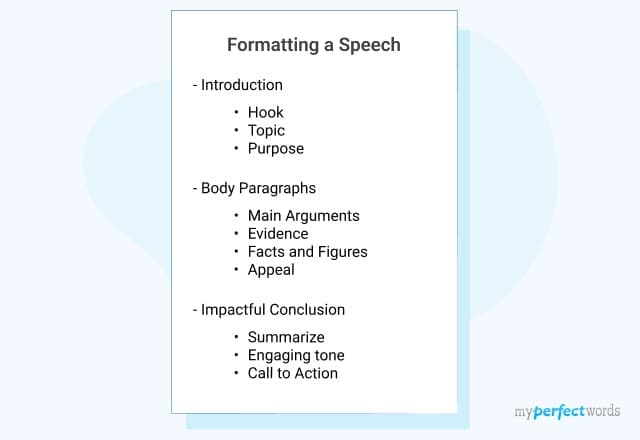
How to Start A Speech - 13 Interesting Ideas & Examples
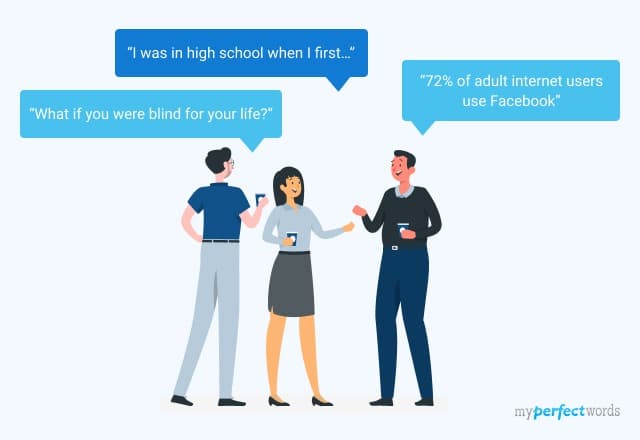
20+ Outstanding Speech Examples for Your Help
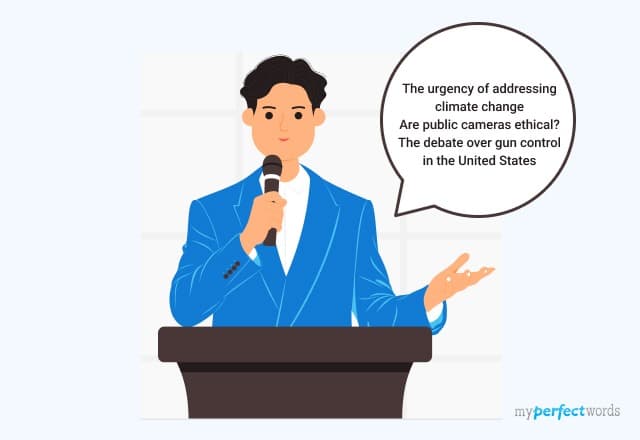
Common Types of Speeches that Every Speechwriter Should Know
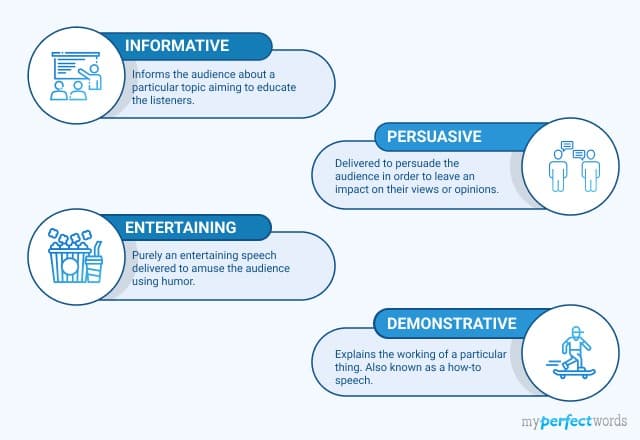
Good Impromptu Speech Topics for Students
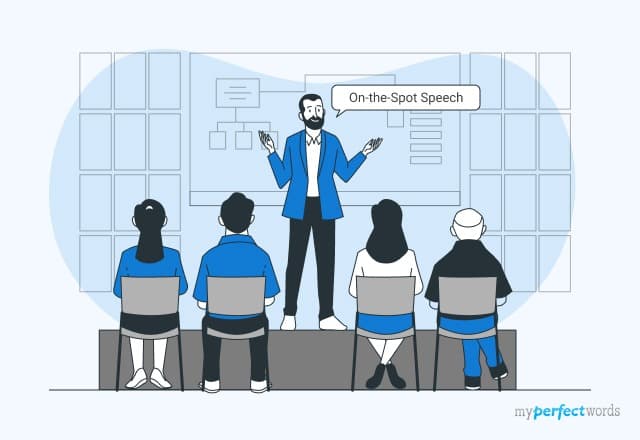
Entertaining Speech Topics for Your Next Debate

Understanding Special Occasion Speech: Types, Steps, Examples and Tips
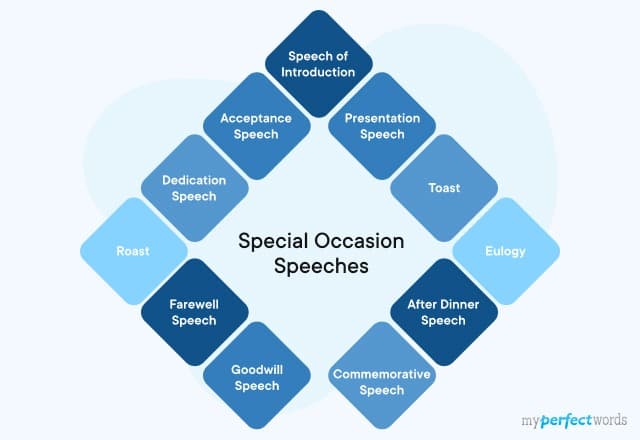
How to Write A Good Acceptance Speech?

Writing A Presentation Speech In English: Tips And Examples

Commemorative Speech - Writing Guide, Outline & Examples
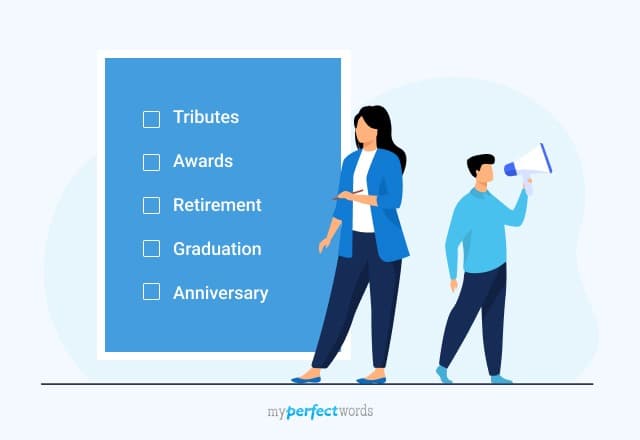
Farewell Speech | Writing Tips & Examples

How to Write an Extemporaneous Speech? A Step-by-Step Guide

A Graduation Speech Writing Guide with Examples
